I have a question about SQL, and I honestly tried to search methods before asking. I will give an abstract (but precise) description below, and will greatly appreciate your example of solution (SQL query).
What I have:
Table A with category ids of the items and prices (in USD) for each item. category id has int type of value, price is string and looks like "USD 200000000" (real value is multiplied by 10^7). Tables also has a kind column with int type of value.
Table B with relation of category id and name.
What I need:
Get a table with price diapasons (like 0-100 | 100-200 | ...) as column names and count amount of items for each category id (as lines names) in all of the price diapasons. All results must be filtered by kind parameter (from table A) with value 3.
Questions, that I encountered (and which caused to ask for an example of SQL query):
- Cut "USD from price string value, divide it by 10^7 and convert to float.
- Gather diapasons of price values (0-100 | 100-200 | ...), with given step in the given interval (max price is considered as unknown at the start). Example: step 100 on 0-500 interval, and step 200 for values >500.
- Put diapasons of price values into column names of the result table.
- For each diapason, count amount of items in each category (category_id). Left limit of diapason shall not be considered (e.g. on 1000-1200 diapason, items with price 1000 shall not be considered).
- Using B table, display name instead of category id.
Response is appreciated, ignorance will be understood.



